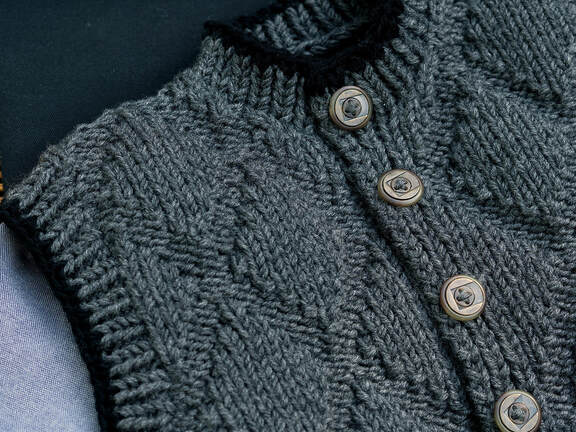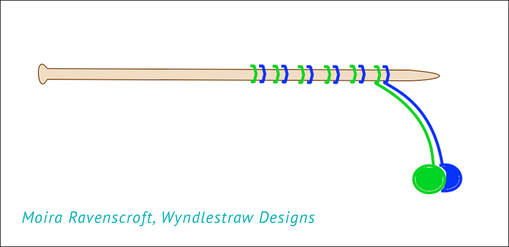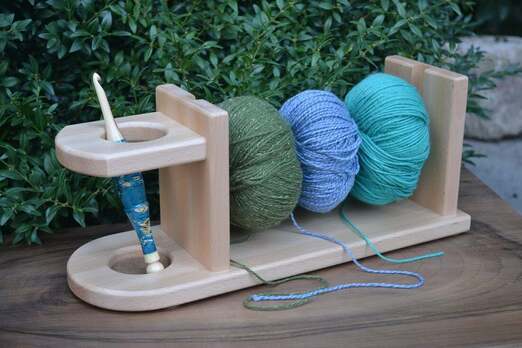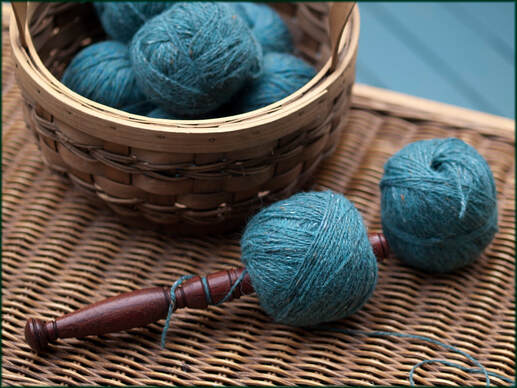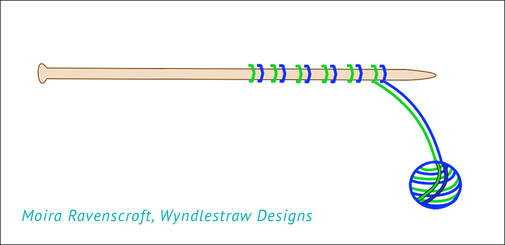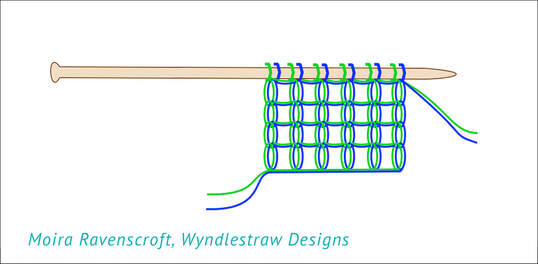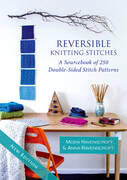So let’s turn our attention to how we can work with two ends of yarn held together – and the answer is that there are a number of different ways.
1 - Using two balls of yarn:
This is a simple solution and works quite well except that the balls of yarn can get tangled together as you work. Each stitch either imparts a little extra twist into the yarn or takes a small amount out, depending on your style of knitting. This change in twist makes its way down each length of yarn leading to the ball and after a while you might see the two ends tightly coiled around each other.
You then need to stop, pin the yarn end onto the ball of yarn, then hang the two balls of yarn from the work and allow them to untwizzle. I actually quite like doing that so don't see it as a major inconvenience. It's quite satisfying seeing them untwisting!
You can reduce tangling to some extent by having each ball in a separate container, or working with both strands coming from the inside of each ball. That will at least prevent the balls from rolling all over the floor.
1a - Using a Lazy Susan:
2 - Using a single centre-pull ball:
Once you have your yarn wound into a centre-pull ball, you can then use one end of yarn from the inside of the ball and one from the outside. Some people say their knitting is not quite so even if they do this but I haven't actually seen that myself. Perhaps it depends how you wind your yarn into the ball. Whichever way you do it though, it is simple and there is only one ball to look after, but you might still need to stop and untwist the yarn ends from time to time.
One of the key advantages of this method is that it is really good for small projects where you really only need one ball of yarn, and you are less likely to end up with more remnants to add to your stash.
However, a slight disadvantage of this method is that you will come to the end of the ball more quickly. You will then have two old ends and two new ends all to be finished at the same point. With two separate balls of yarn the balls tend to end up being slightly different lengths so the joins are usually staggered.
3 – Making a meta-ball:
It also takes more preparation time and is hard to undo if you decide later that you want to use just one of the yarns on its own. However, it is the simplest to knit with and is probably the best if you are going to start knitting a large rug or an art project with multiple ends of yarn!
Some extra notes:
The two strands of yarn will sit next to each other in each knitted stitch. This gives quite an interesting effect as you can see in the Hebden Gilet Jacket at the top of this post.
You do need to be careful that you don't inadvertently split the stitches apart when you are working or you will change the number of stitches on the needle. Of interest, you can actually use this as a technique for increasing the number of stitches if you needed to, but you don't want to end up doing that by mistake.
In addition, you need to make sure that both of the yarn ends wrap the needle every time you are making a new stitch. If you inadvertently only use one thread to form the stitch, then that will create a thinner stitch at that point because you now only have a single strand where you should have two. However, you will usually find that you will detect this fairly quickly as the yarn ends you are working with are now a different length, so that is usually quick to fix.
. . . . .
So that brings us to the end of this blogpost series. Thank you so much to everyone for all the lovely e-mails and messages I have received about this series. I am so pleased to see so many people enjoy my enthusiasm for working with two ends of yarn at the same time! I hope the last few blogposts will give you lots of inspiration for future projects.
If you would like to return to the introduction to the series, then please click here. If you would like any more information about the patterns that I have featured in this series, then please visit my pattern store.
I'll be back soon with updates on the knitting I am currently working on for the spring and summer.
Until then – enjoy the lovely Spring weather!
Moira
| Last Blogpost: Seeing Double #6 – Mix 'n Match Sets Seeing Double Series #1: Knitting with two ends of yarn Next Up: New update for our Reversible Knitting Stitches Book Our book: Reversible Knitting Stitches My Website: www.wyndlestrawdesigns.com Photo credits: Many thanks to Letto Workshop on Etsy for their photo of a wooden yarn holder. |
ball winding, centre-pull ball, center-pull ball, knitting with two end of yarn held together, yarns held double

